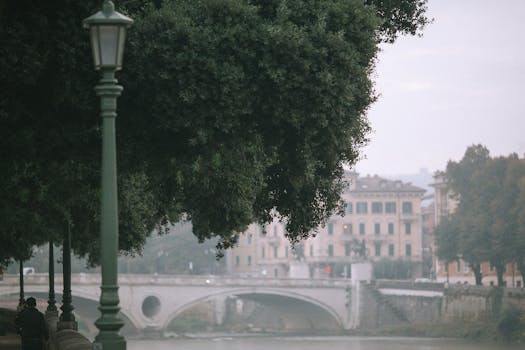
Urban Green Spaces: The Future of Outdoor Living in European Cities by 2025
Urban Green Spaces are revolutionizing the way we live in European cities. With the increasing awareness of the importance of sustainability and green infrastructure, urban green spaces are becoming a vital component of urban planning. By 2025, European cities are expected to have incorporated more green spaces, providing residents with numerous benefits, including improved air quality, reduced stress, and increased opportunities for physical activity.
Introduction to Urban Green Spaces
Urban green spaces refer to areas of vegetation, such as parks, gardens, and green roofs, that are integrated into urban environments. These spaces provide a range of ecosystem services, including air purification, climate regulation, and habitat creation. Urban green spaces also offer numerous social and economic benefits, including improved mental health, increased property values, and enhanced biodiversity.
Benefits of Urban Green Spaces
The benefits of urban green spaces are numerous and well-documented. Some of the most significant advantages include:
- Improved air quality: Urban green spaces can help to remove pollutants from the air, improving respiratory health and reducing the risk of cardiovascular disease.
- Reduced stress: Spending time in nature has been shown to reduce stress levels, improve mood, and enhance cognitive function.
- Increased opportunities for physical activity: Urban green spaces provide a range of opportunities for physical activity, including walking, cycling, and sports.
- Enhanced biodiversity: Urban green spaces can provide habitat for a range of plant and animal species, enhancing biodiversity and ecosystem services.
Innovative Solutions for Urban Green Spaces
To create sustainable and livable cities, innovative solutions are being implemented to integrate urban green spaces into urban planning. Some of the most promising approaches include:
- Green roofs: Green roofs are being installed on buildings to provide insulation, reduce stormwater runoff, and create habitat for wildlife.
- Vertical gardens: Vertical gardens are being used to create green spaces in urban areas, providing a range of benefits, including improved air quality and enhanced biodiversity.
- Urban forestry: Urban forestry initiatives are being implemented to plant and maintain trees in urban areas, providing shade, improving air quality, and enhancing biodiversity.
- Community engagement: Community engagement initiatives are being used to involve residents in the planning and maintenance of urban green spaces, promoting a sense of ownership and responsibility.
Case Studies of Urban Green Spaces in European Cities
Several European cities are leading the way in the development of urban green spaces. Some notable examples include:
- Stockholm, Sweden: Stockholm has implemented a range of urban green space initiatives, including the creation of a green roof on the city’s central station.
- Copenhagen, Denmark: Copenhagen has implemented a range of urban green space initiatives, including the creation of a network of green roofs and vertical gardens.
- Barcelona, Spain: Barcelona has implemented a range of urban green space initiatives, including the creation of a green corridor along the city’s main highway.
Conclusion
Urban green spaces are a vital component of sustainable and livable cities. By 2025, European cities are expected to have incorporated more green spaces, providing residents with numerous benefits, including improved air quality, reduced stress, and increased opportunities for physical activity. Through innovative solutions, such as green roofs, vertical gardens, and urban forestry, cities can create thriving urban ecosystems that promote health, happiness, and well-being.





